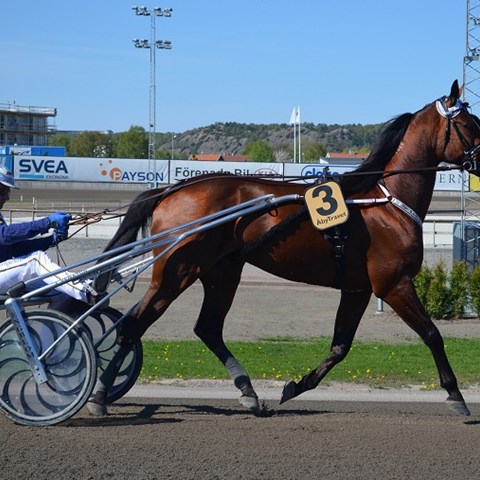Contact
Sara Ringmark
Researcher at the Department of Anatomy, Physiology and Biochemistry (AFB); Division of Anatomy and Physiology
Telephone: 018-671422, 0725128868
E-mail: sara.ringmark@slu.se

In this study, a survey was used to document the type and amount of training to which 2- to 3-year old Swedish Standardbred horses are generally subjected. Moreover, an experimental study was conducted to examine the ability to achieve conventional performance goals in 16 Standardbred geldings fed a forage-only diet and allocated to either a control training programme (C-group) or a training programme with the high intensity training distance reduced by 30% (R-group) from March as 2-year-olds until December as 3-year-olds.
The median distance of high intensity training per week reported by professional trainers was 6,700 m. In experimental horses, planned high intensity training/week was 6,315 and 4,288 m in C-group and R-group, respectively.
There was no difference between experimental training groups in ability to race. The proportion of experimental horses that passed a preparation race as 2-year-olds (100%) and qualified for races (94%) was greater (P<0.05) than for the rest of the cohort (77 and 63%), geldings of the same cohort (71 and 45%) and siblings of the experimental horses (84 and 69%). The proportion of horses that raced (56%) was equal to that of the cohort and of siblings (54%), but greater than the proportion of cohort geldings (35%, P<0.05). In experimental horses, total earnings until 7 years of age were correlated to exercise haematocrit as 3-year-olds (r=0.51, P>0.05) and number of races (r=0.55, P>0.05). Race record was correlated to VLa4 as 3-year-olds (r=-0.75, P<0.01).
It was concluded that a forage-only diet and shorter distance of high intensity training than commonly used in Standardbred training in Sweden do not appear to restrict ability to qualify for races and race before 4 years of age.
https://doi.org/10.3920/CEP170017
S. Ringmark, L. Roepstorff, U. Hedenström, A. Lindholm, A. Jansson. 2017. Reduced training distance and a forage-only diet did not limit race participation in young Standardbred horses. Comparative Exercise Physiology, 13(4), pp. 265–272.
Sara Ringmark
Researcher at the Department of Anatomy, Physiology and Biochemistry (AFB); Division of Anatomy and Physiology
Telephone: 018-671422, 0725128868
E-mail: sara.ringmark@slu.se